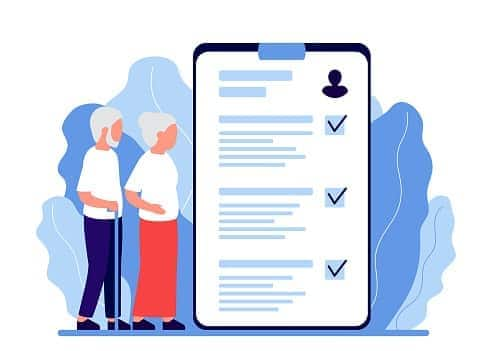- Types of health insurance plans
- What is a PPO?
- What is an HMO?
- What is an HDHP?
- What is a POS?
- What is an EPO?
- What is the difference between HMO, PPO and HDHP?
- Cost comparison of HMO, PPO, EPO, POS health insurance plans
- How HMO-managed healthcare plans work
- How to enroll in a health plan
- Frequently asked questions: Choosing a health plan
Types of health insurance plans
The five most common types of health insurance plans, generally referred to by their acronyms, are:
- Preferred provider organizations (PPOs)
- Health maintenance organizations (HMOs)
- High deductible health plans (HDHPs)
- Point of service plans (POS)
- Exclusive provider organization plans (EPO)
PPOs are the most common type of health plan in the employer-sponsored health insurance market, while HMOs are more common in the individual insurance market. HDHPs comprise about one-third of employer-sponsored plans and have been seen as a lower-cost health insurance option for employers over the past decade. POS and EPO plans are options but less common than HMOs, PPOs and HDHPs.
What is a PPO?
PPO stands for preferred provider organization. PPOs are usually more expensive than an HMO and an HDHP and have greater flexibility.
Forty-six percent of covered employees were enrolled in a PPO in 2021, according to a report by the Kaiser Family Foundation; 16% were in an HMO and 9% were in a POS plan.
You usually don’t have to select a primary care provider (PCP) in a PPO plan. A PPO often has more extensive healthcare provider options than an HMO. PPOs allow you to get both in-network and out-of-network care -- though out-of-network providers cost more. You can also see a specialist without a referral.
Though a PPO gives you more independence, this doesn’t mean you have complete access to the healthcare system without any oversight. A health plan may still require you and a physician to get approval for a costly service, such as an MRI. That's called prior authorization.
Kaiser Family Foundation reports the average annual deductible for a PPO single coverage plan is $1,245. Once you reach your deductible, your insurer picks up its coinsurance portion.
The plans also include an out-of-pocket maximum for in-network care. If you reach your out-of-pocket maximum, your insurer covers all costs. A plan’s out-of-pocket maximum can vary widely, so you’ll need to check for your plan's out-of-pocket maximum.
The main benefit of a PPO is flexibility, but it comes at the cost of higher premiums and a deductible that you will have to pay before your insurer starts paying for care.
When a PPO might be right for you:
- You want the flexibility to go out of network without needing referrals.
- Flexibility is more important to you than paying higher premiums.
- You would rather pay higher premiums with potentially lower out-of-pocket costs when you need care.
What kind of person should opt for a PPO: Someone who utilizes health care regularly and sees specialists or wants to have the option to see a specialist without getting a referral.
What is an HMO?
HMO stands for health maintenance organization, making up 16% of employer health plans but about half of the marketplace plans. HMOs are known for lower premiums than PPOs and a restricted network of doctors and hospitals. That smaller network means you sacrifice flexibility for lower costs.
 You’ll likely pay much less in premiums for an HMO than a PPO.
You’ll likely pay much less in premiums for an HMO than a PPO.
HMOs require that you name a PCP who coordinates care. Your primary doctor must refer you to a specialist, so HMOs may have a deductible, but it's lower than other plans. The average deductible for individual coverage is $1,271. Health plans have increased HMO deductibles faster than other plans in recent years.
One drawback to an HMO is that these plans usually don’t allow you to go outside your network. If you do, you pay for the care on your own. An exception is if you need emergency care, which requires the facility (but not necessarily the providers) to bill as in-network.
Not all providers accept HMOs. Before choosing an HMO, ensure your provider or providers take the plan.
When an HMO might be right for you:
- You have a primary care physician and other providers in the HMO network.
- You don’t see many specialists and don’t need referrals often.
- You don’t mind the limitations of only seeing providers in your network.
- Lower premiums are more important to you than flexibility.
What kind of person should opt for an HMO: Someone who wants to pay as little as possible in premiums without high deductibles. An HMO could be a good option if you have a PCP and your other healthcare providers are already in the HMO.
What is an HDHP?
HDHP stands for high-deductible health plan. HDHPs have become popular as more employers offer plans to contain healthcare costs.
Twenty-eight percent of workers have an HDHP. HDHP plans in the marketplace are called Bronze or Silver plans. Most people with a marketplace plan have either a Bronze or Silver plan.
An HDHP describes only the deductible and out-of-pocket costs. An HDHP can have a PPO or HMO benefit design. What makes an HDHP a high deductible plan is its hefty deductible.
The IRS defines an HDHP as a health plan with a deductible of at least $1,400 for an individual and $2,800 for a family. You must pay that amount for care before your health insurance chips in.
The average HDHP deductible is $2,424, but many plans exceed $3,000, according to the Kaiser Family Foundation.
An HDHP's out-of-pocket in-network costs can't exceed more than $7,000 for an individual and $14,000 for a family.
If you choose this plan, you’ll want to keep that in mind, and you should set aside money for the deductible in case you need it.
Once you reach the deductible, your insurer will begin to pay its share, and you'll pay your percentage of coinsurance. Your insurer will cover all costs once you’ve hit your out-of-pocket maximum.
HDHPs usually have lower premiums, so they can be a less costly plan option -- as long as you don’t need a lot of medical care. HDHPs might be a good idea if you are young and healthy, but could be costly to older adults or young families.
Another feature that might interest you is that HDHPs typically feature a Health Savings Account. An HSA allows you to save money pre-tax to pay for qualified medical expenses. Some employers seed money in employee HSA accounts to help pay for care, so you’ll want to see if your employer provides money to employee HSAs when making a health plan decision.
Before deciding on an HDHP, think about your next year of potential health care costs to see whether the lower premiums will more than offset the potential costs of care.
When an HDHP might be right for you:
- You don’t have many healthcare costs and you don’t expect to have many costs over the next year.
- You’d rather pay fewer upfront costs in premiums with the understanding that the higher deductible means you’ll pay more out-of-pocket if you need care.
- You don’t have children and/or a spouse on your plan who may use a lot of healthcare services.
What kind of person should opt for an HDHP: Someone who is healthy and doesn’t expect to use many health care services within the next year. You want the cheapest premiums and don’t mind paying a high deductible if you need care.
What is a POS?
POS stands for point of service plan and makes up only 9% of health plans. POS plans are a hybrid of PPOs and HMOs. Point of service means that healthcare consumers can choose whether to use HMO or PPO services each time they see a provider.
POS plans usually have similar rules to HMOs. For instance, you need to choose an in-network physician as your PCP. However, you can see an out-of-network physician for a higher fee in a POS plan.
When a POS might be right for you:
- You have a PCP in the POS plan.
- You want the flexibility of going out of network like a PPO -- and don’t mind paying the higher out-of-pocket fees when you need to go out of network.
- You’re good at keeping healthcare receipts. You don’t mind filling out forms and sending in bills for payment if you get care out of network.
What kind of person should opt for a POS: Someone who likes being able to go out of network for care but also wants a PCP coordinating your care.
What is an EPO?
EPO stands for exclusive provider organization and is a managed care plan that requires you to go to doctors and hospitals in the plan’s network.
 You don’t need to choose a PCP or need a referral, so in that sense, it’s similar to a PPO, but you will only receive coverage for providers in your network. Other parts of an EPO plan are similar to an HMO, such as having a limited network of doctors and hospitals. You can’t get care outside the network unless it’s an emergency.
You don’t need to choose a PCP or need a referral, so in that sense, it’s similar to a PPO, but you will only receive coverage for providers in your network. Other parts of an EPO plan are similar to an HMO, such as having a limited network of doctors and hospitals. You can’t get care outside the network unless it’s an emergency.
Much like a PPO, you need to get approval from your health plan to get what’s deemed an expensive service.
When an EPO might be right for you:
- You want the flexibility of a PPO and don’t need a referral as long as you stay in-network.
- You’re OK with having a limited network of doctors and facilities like an HMO.
- You want a network like an HMO but don’t want to choose a PCP.
What kind of person should opt for an EPO?: Someone who doesn’t mind having a limited number of doctors and facilities and would rather not have to get a referral to see a specialist.
What is the difference between HMO, PPO and HDHP?
It’s open enrollment season at your job, and your employer offers you a choice between the three biggest plan types: HMO, PPO and HDHP. Which is best? It depends on your financial and medical situation – and preferences.
For instance, would you prefer flexibility to choose your providers and don’t mind paying higher premiums? If so, a PPO might be right for you.
Are you OK with a smaller network of providers and want lower costs? In that case, an HMO could be perfect.
Do you rarely use medical services and want a plan that protects you mainly in case of a significant illness or accident? An HDHP is a good choice for you.
Choosing the right health insurance plan is a personal decision and depends on your situation and preferences. Whether you ultimately choose a PPO, HMO, HDHP, POS or EPO, take costs, flexibility, coverage and convenience into account when making that decision.
Cost comparison of HMO, PPO, EPO, POS health insurance plans
Cost, including premiums and out-of-pocket expenses, plays a vital role when choosing a health insurance plan.
HMOs and EPOs usually cost less than PPOs and HDHPs are often the cheapest health insurance plans.
Here's the average premium and deductible for single coverage for each plan, as well as how the plans differ in terms of referrals and out-of-network care:
Here's the average premium and deductible for single coverage for each plan as well as how the plans differ in terms of referrals and out-of-network care:
| Type of plan | Average premium | Average deductible | Need referrals? | Out of network care |
|---|---|---|---|---|
| HMO | $1,204 | $1,271 | Yes | No |
| PPO | $1,389 | $1,245 | No | Yes, but costlier |
| HDHP | $1,242 | $2,424 | Varies | Varies |
| POS | $1,183 | $1,852 | No | Yes, but costlier |
| EPO | NA | NA | No | No |
Kaiser Family Foundation, 2021 Employer Health Benefits Survey. Note: The survey did not include the average premium or deductible amounts for an EPO.
How HMO-managed healthcare plans work
Managed health insurance plans are a way for health plans to control costs. Fee-for-service and indemnity health insurance plans are other types of plans, but those usually cost more for employers.
Managed health insurance plans pool members and create provider networks. Those providers follow contracts with health insurance companies. That includes payment levels and even offering a certain level of quality rather than fee-for-service.
With managed care, health insurance companies can better control costs and reward providers for reducing patient healthcare services by offering high-quality care.
How to enroll in a health plan
If you’re eligible, you can enroll in a health insurance plan through your employer when you first become eligible, during open enrollment or if you qualify for a special enrollment period.
Employer-sponsored health insurance is how most pre-retirement people get health insurance.
You can also sign up for an individual or family plan through the Affordable Care Act (ACA) marketplace or a similar plan directly from a health insurance company.
Other health insurance options are Medicare and Medicaid if you qualify. Eligibility for those plans is connected to your age (Medicare) and household income (Medicaid).
Health insurance finder tool

COBRA
Learn more about COBRA
Medicare
Medicare costs vary depending on which option you choose.
Learn more about Medicare costs.
Medicaid

Parent's employer-sponsored health insurance

Spouse's employer-sponsored health insurance

Employer-sponsored health insurance

Preferred-provider Organization (PPOs)
Preferred-provider organization (PPOs) plans are the most common type of
employer-based health plan. PPOs have higher premiums than HMOs and HDHPs, but
those added costs offer you flexibility. A PPO allows you to get care anywhere
and without primary care provider referrals. You may have to pay more to get
out-of-network care, but a PPO will pick up a portion of the costs.
Find out more about the differences between plansHealth maintenance organization (HMO)
Health maintenance organization (HMO) plans have lower premiums than PPOs.
However, HMOs have more restrictions. HMOs don't allow you to get care outside
of your provider network. If you get out-of-network care, you'll likely have to
pay for all of it. HMOs also require you to get primary care provider referrals
to see specialists.
Find out more about the differences between plansHigh-deductible health plans (HDHPs)
High-deductible health plans (HDHPs) have become more common as employers look
to reduce their health costs. HDHPs have lower premiums than PPOs and HMOs, but
much higher deductibles. A deductible is what you have to pay for health care
services before your health plan chips in money. Once you reach your deductible,
the health plan pays a portion and you pay your share, which is called
coinsurance.
Find out more about the differences between plansExclusive provider organization (EPO)
Exclusive provider organization (EPO) plans offer the flexibility of a PPO with
the restricted network found in an HMO. EPOs don't require that members get a
referral to see a specialist. In that way, it's similar to a PPO. However, an
EPO requires in-network care, which is like an HMO.
Find out more about the differences between plans
Learn more about individual insurance plans
Sources
- Section 7: Employee Cost Sharing – 9805 | KFF
- Summary of Findings – 9805 | KFF
- 2021 Employer Health Benefits Survey | KFF
Frequently asked questions: Choosing a health plan
What is the difference between an HMO and a PPO?
PPOs and HMOs are the two most common health insurance benefit design types. Here’s how they differ:
- PPOs allow members to get out-of-network care -- often at a higher cost than in-network care. HMOs don’t typically reimburse for out-of-network care unless it’s an emergency.
- HMOs usually require members to choose a primary care physician; PPOs don’t require a PCP.
- HMOs often demand a primary care provider referral for members to see specialists; PPOs don’t require referrals.
What is the difference between a PPO and an EPO?
PPOs and EPOs both don’t demand a referral to see specialists and don’t require that members choose a primary care provider, but they differ in a few ways:
- EPOs won’t reimburse for care outside of your provider network; PPOs allow out-of-network care but usually at higher out-of-pocket costs than in-network care.
- PPOs usually have wider networks than EPOs, which could make finding a provider in an EPO harder than a PPO.
What is the difference between a PPO and a POS?
PPOs and POS don’t require referrals to see specialists and both allow out-of-network care. Here’s how they’re different:
- POS plans allow out-of-network care, but members usually have to file paperwork, which doesn’t happen in a PPO.
- POS plans often have higher deductibles than PPOs.
- POS plans require that you choose a primary care provider; PPOs don’t demand that.
What is the difference between an HMO and a POS?
Members have to receive in-network care for both POS and HMO plans and both types of plans have restricted networks. They’re different in one fundamental way:
- POS plans don’t require referrals to see specialists, but HMO plans demand a referral to see a specialist.
What is the difference between an EPO and a POS?
POS and EPO plans don’t require provider referrals to see specialists, but here’s how they’re different:
- POS plans let you get out-of-network care; EPO plans do not.
- POS requires choosing a primary care provider, while EPOs don’t.
Why are the premiums for a PPO more expensive than those for an HMO?
A PPO gives you much more coverage than an HMO and also comes with the flexibility to visit out-of-network doctors and hospitals – a setup that costs more to deliver, resulting in a higher monthly premium. PPOs also have a much wider network of doctors and hospitals and also allow you to see a specialist directly, whereas, with an HMO, you are often required to see your primary care physician before going to a specialist.
Which type of health insurance plan typically has the lowest deductibles?
An HMO, one of the cheapest health plans, offers low premiums and deductibles along with fixed copays for doctor appointments, according to Aetna. “HMOs are a good choice if you’re on a tight budget and don’t have medical issues,” the insurer says.
















